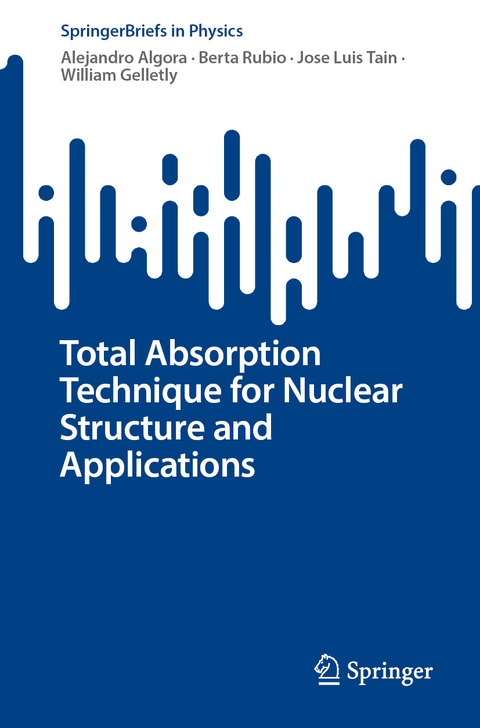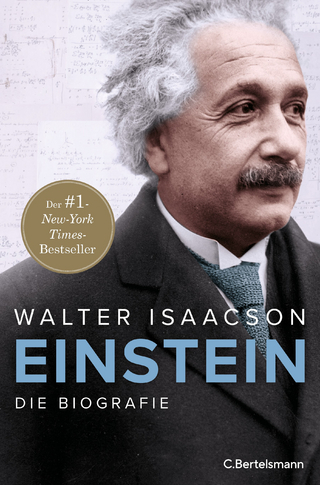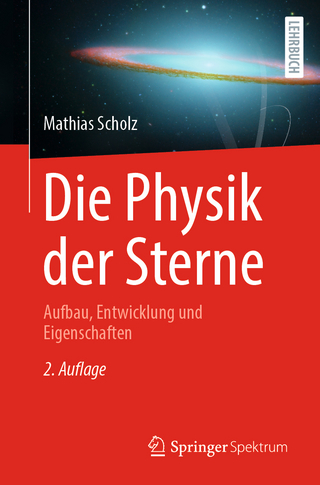
Total Absorption Technique for Nuclear Structure and Applications
Springer International Publishing (Verlag)
978-3-031-58863-1 (ISBN)
This book is the first monograph dedicated to the use of the total absorption technique in beta decay studies. It provides a detailed introduction to the beta decay process and all necessary know-how for the use of the total absorption technique.
Total absorption spectroscopy (TAS) is the one of the very few techniques available that can provide nuclear decay data free from the Pandemonium effect (the systematic error causes the assignment of larger beta-decay probabilities than the real values to the lower lying levels). This book covers all aspects related to the use of this technique, from the preparation of an experiment to the algorithms required in the analysis of the data acquired. It also covers the most relevant applications of the technique, from nuclear structure (comparison with nuclear models, determination of nuclear shapes) to nuclear astrophysics and other more applied purposes such as the prediction of reactor decay heat and the primary antineutrino spectrum from nuclear reactors.
Dr. Alejandro Algora has been working since 1990 in the field of nuclear physics. He received his PhD from the Kossuth Lajos University in Debrecen (Hungary), where he also did his university studies. He has worked at the Institute of Nuclear Research of the Hungarian Academy of Sciences, Debrecen, Hungary, at the Laboratory Nazionale de Legnaro, Legnaro, Italy, and at the Instituto de Física Corpuscular, Valencia, Spain. Dr. Algora is an expert in a variety of aspects in nuclear spectroscopy. He has also worked in theoretical models of atomic nuclei. He has applied his knowledge to tackle a number of problems in nuclear structure and practical applications to nuclear power. He has published extensively in the major international journals of nuclear physics and he is regularly invited to deliver talks about his work at international conferences and workshops. He has acted as spokesperson and has led many experiments at major facilities around the World. Dr. Algora has also been a member of international committees in a variety of different countries. His current interests are focused in beta decay studies of very exotic nuclei, their importance in explosive nuclear processes in stars, their impact on practical applications related to the operation of nuclear reactors, the handling of nuclear waste and the prediction of the antineutrino spectrum from reactors.
Berta Rubio is affiliated with the CSIC (Consejo Superior de Investigaciones Científicas) and the Instituto Física Corpuscular (IFIC) in Valencia, Spain. After a brief spell as a researcher in Granada she then moved to IFIC where she founded the Gamma Ray Spectroscopy work together with Jose-Luis Taín. Her research interests are firmly rooted in spectroscopy. Her experiments have involved studies of both radioactive decays and nuclear reactions and they have a focus on measurements that provide clear tests of the predictions of nuclear models and theories. She has been spokesperson for and has led many experiments at laboratories around the World. She has a number of current interests. Beta Decay and Charge Exchange are complementary processes even although they are mediated by the weak and strong interactions respectively. She has used this to pursue a number of interesting problems in N~ Z nuclei relating to isospin. She also works on radioactive decays of exotic nuclei close to the limit that can be studied at present. She has been prominent in Spain in advocating strong involvement in the new generation of radioactive beam facilities under construction around the world. She has played a strong role in helping to build the programme of the Future FAIR (Facility for Antiproton and Ion Research) under construction in Darmstadt. She has published extensively in leading journals and has given many invited talks at International Conferences, Workshops and Schools.
Jose Luis Taín studied as an undergraduate at the Universidad Complutense de Madrid, Spain before received his Ph.D. at Granada, Spain on the basis of research in Nuclear Physics at KFA, Julich in Germany. He was a research assistant at Julich before becoming an Assistant Professor at Granada. He then became a tenured scientist working for the Consejo Superior de Investigaciones Científicas (CSIC) in the Instituto Fisica Corpuscular (IFIC) in Valencia, where he has worked ever since. At IFIC he started the Gamma Ray Spectroscopy group together with Berta Rubio. His research interests have spanned a wide range of topics in low energy nuclear physics. In recent years he has concentrated his efforts on the study of beta decays far from the line of nuclear stability using total absorption gamma ray spectrometers and neutron detectors. The topics studies lie in the fields of nuclear structure (evolution of shell structure), nuclear technology (reactor decay heat and delayed neutron fractions of importance in reactors), astrophysics (s- and r-process) and fundamental physics (reactor a
Introduction.- Beta decay.- The total absorption technique (TAS).- Analysis techniques.- Nuclear structure and astrophysical applications.- Other applications.- Reactor decay heat and reactor neutrino applications, non-proliferation applications, reactor anomaly, neutrino factory.- Future and outlook.- New detectors and installations, challenges, complementarity of beta delayed neutron measurements (Pn measurements).
| Erscheinungsdatum | 20.07.2024 |
|---|---|
| Reihe/Serie | SpringerBriefs in Physics |
| Zusatzinfo | X, 82 p. 26 illus., 20 illus. in color. |
| Verlagsort | Cham |
| Sprache | englisch |
| Maße | 155 x 235 mm |
| Themenwelt | Naturwissenschaften ► Physik / Astronomie ► Astronomie / Astrophysik |
| Naturwissenschaften ► Physik / Astronomie ► Atom- / Kern- / Molekularphysik | |
| Schlagworte | Detector Response Function • Gamma Cascade Detection • Gamma Ray Spectroscopy • n_TOF Collaboration CERN • nuclear astrophysics • Pandemonium Effect • Reactor Antineutrino Spectrum • Reactor Decay Heat |
| ISBN-10 | 3-031-58863-0 / 3031588630 |
| ISBN-13 | 978-3-031-58863-1 / 9783031588631 |
| Zustand | Neuware |
| Informationen gemäß Produktsicherheitsverordnung (GPSR) | |
| Haben Sie eine Frage zum Produkt? |
aus dem Bereich


